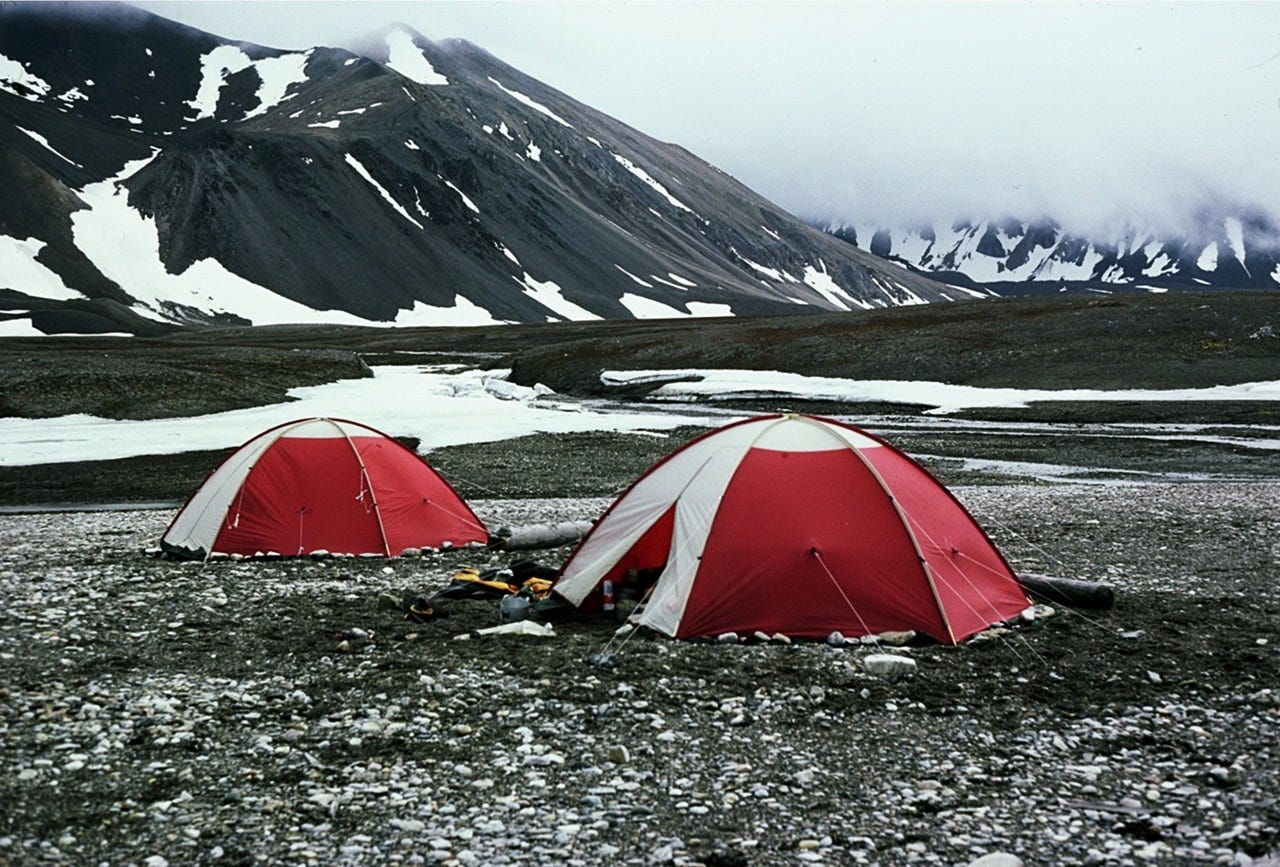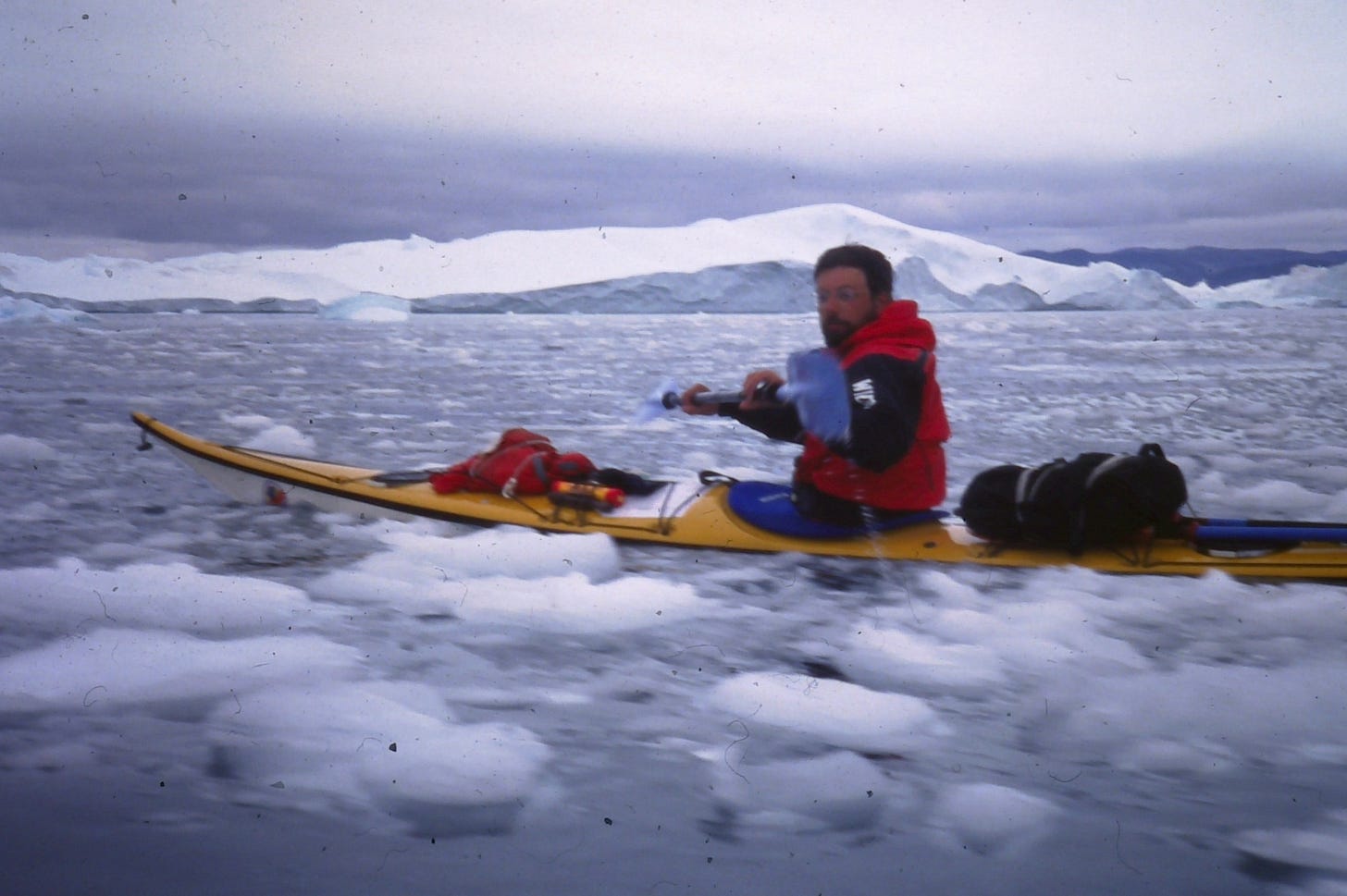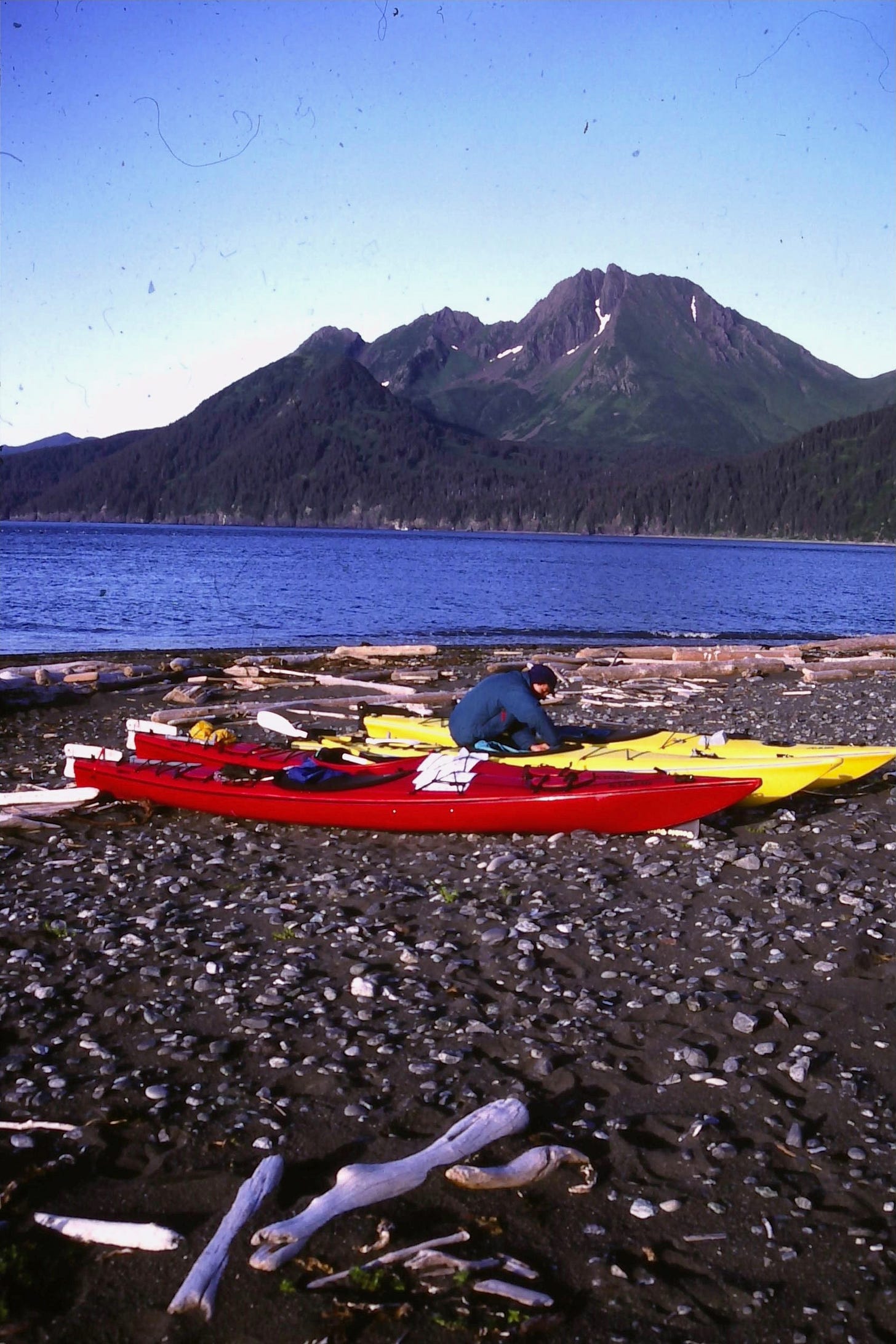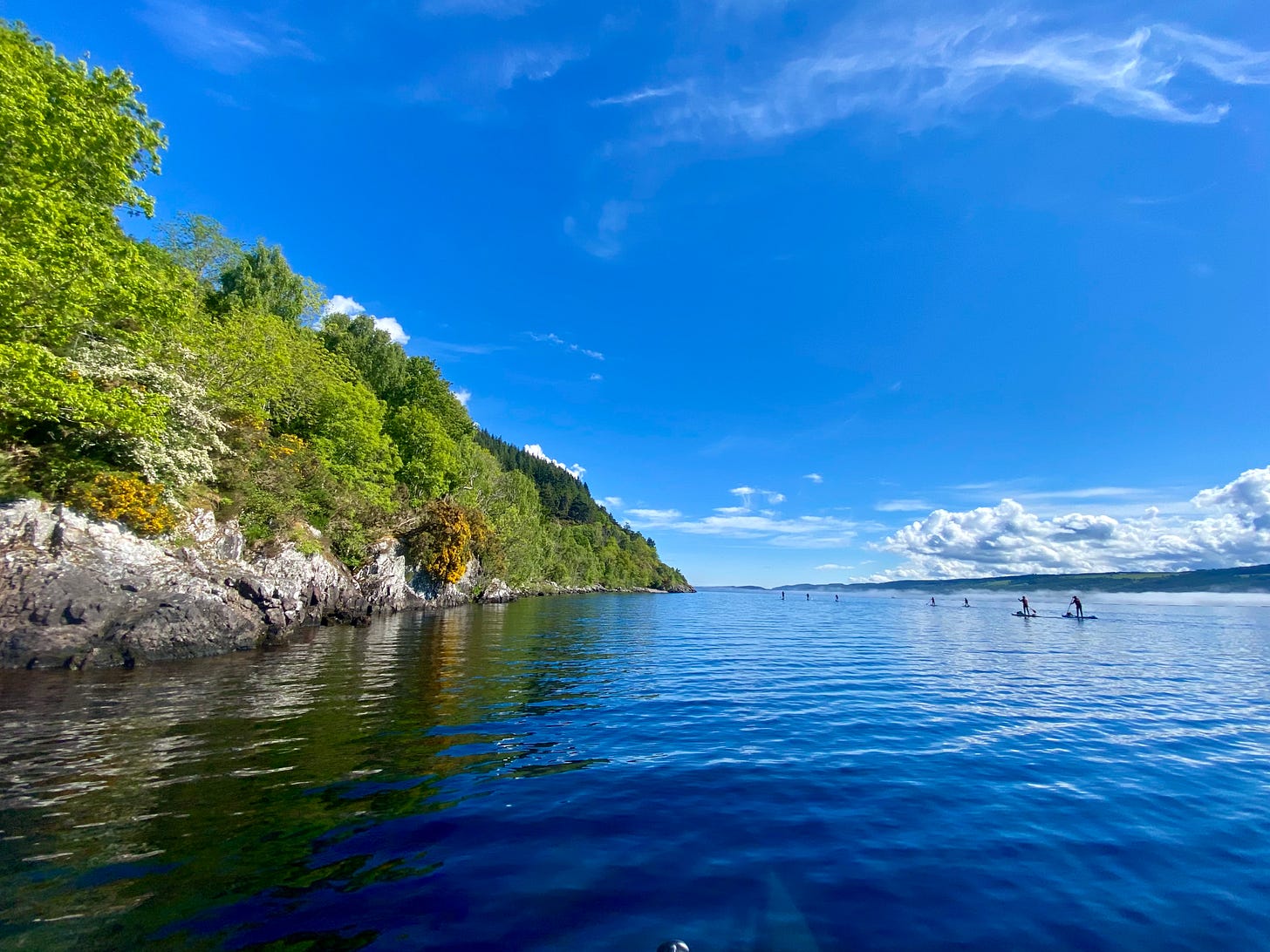Looking back over the history of modern sea kayak there have been noticeable changes in both the demographics of the paddlers and the nature of the activity. One of the most notable changes appears to be a reduction in the length and number of sea kayaking trips. In the 1970’s many paddlers (many is a relative term as there were far less active paddlers than there are today) would go away of two week long trips, most years. For paddlers in the UK, Scotland and then Scandinavia were the main destinations whilst in North America it was British Columbia and Alaska that were proving attractive.

Many of the sea kayaks, which came on the market at the time, were designed to meet the needs of those paddlers who were embarking on these longer multi-day trips. Kayaks such as the Nordkapp and Baidarka Explorer, were quick, had a relatively high carrying capacity and, in the eyes of many, were particularly unstable. The Nordkapp HM remains, in my opinion, faster than many modern designs.

Magazines and books of the time were full of descriptions of multi-day trips, mainly by men with beards. It was during this period that the classic image of the sea kayaker evolved. Apologies, I still have my beard! This was perhaps the golden era of expedition sea kayaking. Classic trips were being undertaken for the first time. examples include the circumnavigation of Ireland, trips to Nordkapp, a circumnavigation of the British Isles, Cape Horn etc.
Interestingly many of the people undertaking these trips were reasonably young men. For example, when we went to Svalbard for two months in the summer of 1983, in our Nordkapps (what else) the average of the group was 26. I might be wrong but I am unaware of many groups of sea kayakers, of around the same age today, who undertaking similar journey’s.
That said there will always be individuals are pushing the boundaries, Will Copestake, is an individual who springs to mind. His 364 day solo circumnavigation of Scotland plus a continuous ascent of all of the 282 munro’s during the winter, was named as UK and Scottish adventurer of the year in 2015. That is a pretty amazing way to celebrate the completion of your degree.
Over the years, the two week trip of the 70’s was reduced to one week trips and more recently a weekend away in the sea kayak is almost seen as a major trip. Is this a reflection of what is described as the money rich, time poor society? Are people too busy to be able to commit a couple of weeks away each summer to disappear paddling with their mates?

Linked to this has been the change in kayak design. They have generally been reduced in length and although they might have the carrying capacity sufficient for a weekend, packing food etc for two weeks would be a significant challenge. Many adverts are extolling the virtues, of specific kayaks, in tidal races as opposed their ability to carry camping equipment for several weeks. Films are continually appearing online, of places such as Pen Rhyn Mawr in Wales and Skookumchuck in British Columbia. It is the sea kayaking equivalent of park and play.
In the era of Instagram people are looking for images of paddlers surfing perfect waves in brightly coloured kayaks, complete with bright sunshine. Wind swept isolated beaches do not always have the same appeal on social media
Perhaps because my sea kayaking career started in the golden era of sea kayaking expeditions I have a different view. I remember waiting for “Canoeing in Britain” to arrive every three months when I was able to read about the achievements of paddlers such as Derek Hutchinson, Frank Goodman, Colin Mortlock and Sam Cook to name just a few. At that time I was unaware that 3 of these 4 paddlers were to become friends.
The other difference is the significant rise in the commercial sector, with numerous companies now running multi-day paddling trips. In the 1980’s I recall the national centres running some sea kayaking trips, plus a few other centres, such as Calshot Activities Centre. I think Brittany was a favoured destination. Individuals such as Nigel Foster and Nigel Dennis were also developing a name for themselves, at this time, running overseas trips.
In North America the commercial market was more advanced, than in the U.K. with a number of companies running multi-day (or even multi-week) trips particularly to the wilderness areas of British Columbia and Alaska. The excellent “Sea Kayaker” magazine was a perfect place to find out what paddlers were up to, particularly in the Pacific North West and to see the adverts for companies, which were running trips to places we could only dream of.

Today the market has changed completely with numerous companies and plenty of highly qualified leaders running multi-day trips around the world. Another consequence linked to this development is the availability of kayaks to hire, in some pretty special places.
If people are short on time it is easier to pay somebody to do all the planning and to accept responsibility whilst out on the water. Pay your money, turn up at the airport and head out on the water. People don’t appear to have the time or perhaps the willingness, to acquire the skills necessary, to able to run trips to remote destinations with their mates.
Interestingly insurance seems to reflect this. For 25 years I have had the same annual travel insurance and have always checked that I have been covered for areas such as Greenland and Baja. Last year as I prepared to go to Greenland I called the insurance company and was told that I was only covered now if it was on a commercial trip with a professional guide. This came as a bit of a shock, I called a few more companies who all told me the same story. Eventually I did find a company but it did take a bit of searching.
Interestingly I also asked about SUP and was told that if I did a session whilst away I would be covered but if the purpose of the holiday was to go SUP’ing then I wasn’t covered. The world of insurance is changing so make sure that you ask the correct questions of your insurers if you are going away paddling.

The first real trip that we did where we flew in and then rented kayaks was Alaska, in 1998, since then it has been Greece, Mauritius, Malta, Mexico, Scotland, Maine, Sweden, Italy, Australia and Greenland where we have rented kayaks. Greenland turned out to be such a popular location that the Jersey Canoe Club has purchased its own fleet of kayaks to keep on the west coast of this Arctic paddling paradise.

I am fortunate that most years I am still able to go away paddling and live from my kayak. For me nothing beats the feeling of packing your kayak before heading out to find your own remote beach. Sitting watching the sun set from the entrance to your tent before falling asleep to the sound of waves breaking on the beach and then repeating the process the following day. What could be more enjoyable or is it just that I from an older generation of paddlers?
The British Canoe Union Sea Touring Committee used to sell stickers ( in the 1970’s and 80’s) which said “A Special Kind of Freedom”, perhaps the time has come to promote that sentiment again.




I agree with your sentiment - I love long trips. One week is minimum for me for an overnight kayak trip, but for canoeing its an easy stretch to 2-3 weeks (preferebly in a sparsely populated or wilderness areas)
An interesting and great read as always.